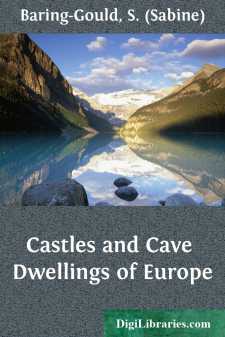Categories
- Antiques & Collectibles 13
- Architecture 36
- Art 48
- Bibles 22
- Biography & Autobiography 813
- Body, Mind & Spirit 142
- Business & Economics 28
- Children's Books 15
- Children's Fiction 12
- Computers 4
- Cooking 94
- Crafts & Hobbies 4
- Drama 346
- Education 46
- Family & Relationships 57
- Fiction 11828
- Games 19
- Gardening 17
- Health & Fitness 34
- History 1377
- House & Home 1
- Humor 147
- Juvenile Fiction 1873
- Juvenile Nonfiction 202
- Language Arts & Disciplines 88
- Law 16
- Literary Collections 686
- Literary Criticism 179
- Mathematics 13
- Medical 41
- Music 40
- Nature 179
- Non-Classifiable 1768
- Performing Arts 7
- Periodicals 1453
- Philosophy 64
- Photography 2
- Poetry 896
- Political Science 203
- Psychology 42
- Reference 154
- Religion 513
- Science 126
- Self-Help 84
- Social Science 81
- Sports & Recreation 34
- Study Aids 3
- Technology & Engineering 59
- Transportation 23
- Travel 463
- True Crime 29
Castles and Cave Dwellings of Europe
Description:
Excerpt
PREFACE
When in 1850 appeared the Report of the Secretary of War for the United States, containing Mr. J. H. Simpson's account of the Cliff Dwellings in Colorado, great surprise was awakened in America, and since then these remains have been investigated by many explorers, of whom I need only name Holmes' "Report of the Ancient Ruins in South-West Colorado during the Summers of 1875 and 1876," and Jackson's "Ruins of South- West Colorado in 1875 and 1877." Powell, Newberry, &c., have also described them. A summary is in "Prehistoric America," by the Marquis de Nadaillac, 1885, and the latest contribution to the subject are articles in Scribner's Magazine by E. S. Curtis, 1906 and 1909.
The Pueblos Indians dwell for the most part at a short distance from the Rio Grande; the Zuñi, however, one of their best known tribes, are settled far from that river, near the sources of the Gila. In the Pueblos country are tremendous cañons of red sandstone, and in their sides are the habitations of human beings perched on every ledge in inaccessible positions. Major Powell, United States Geologist, expressed his amazement at seeing nothing for whole days but perpendicular cliffs everywhere riddled with human dwellings resembling the cells of a honeycomb. The apparently inaccessible heights were scaled by means of long poles with lateral teeth disposed like the rungs of a ladder, and inserted at intervals in notches let into the face of the perpendicular rock. The most curious of these dwellings, compared to which the most Alpine chalet is of easy access, have ceased to be occupied, but the Maqui, in North-West Arizona, still inhabit villages of stone built on sandstone tables, standing isolated in the midst of a sandy ocean almost destitute of vegetation.
The cause of the abandonment of the cliff dwellings has been the diminished rainfall, that rendering the land barren has sent its population elsewhere. The rivers, the very streams, are dried up, and only parched water-courses show where they once flowed.
"The early inhabitants of the region under notice were wonderfully skilful in turning the result of the natural weathering of the rocks to account. To construct a cave-dwelling, the entrance to the cave or the front of the open gallery was walled up with adobes, leaving only a small opening serving for both door and window. The cliff houses take the form and dimensions of the platform or ledge from which they rise. The masonry is well laid, and it is wonderful with what skill the walls are joined to the cliff, and with what care the aspect of the neighbouring rocks has been imitated in the external architecture." [Footnote: Nadaillac, "Prehistoric America," Lond. 1885, p. 205.]
In Asia also these rock-dwellings abound. The limestone cliffs of Palestine are riddled with them. They are found also in Armenia and in Afghanistan. At Bamian, in the latter, "the rocks are perforated in every direction. A whole people could put up in the 'Twelve Thousand Galleries' which occupy the slopes of the valley for a distance of eight miles....






